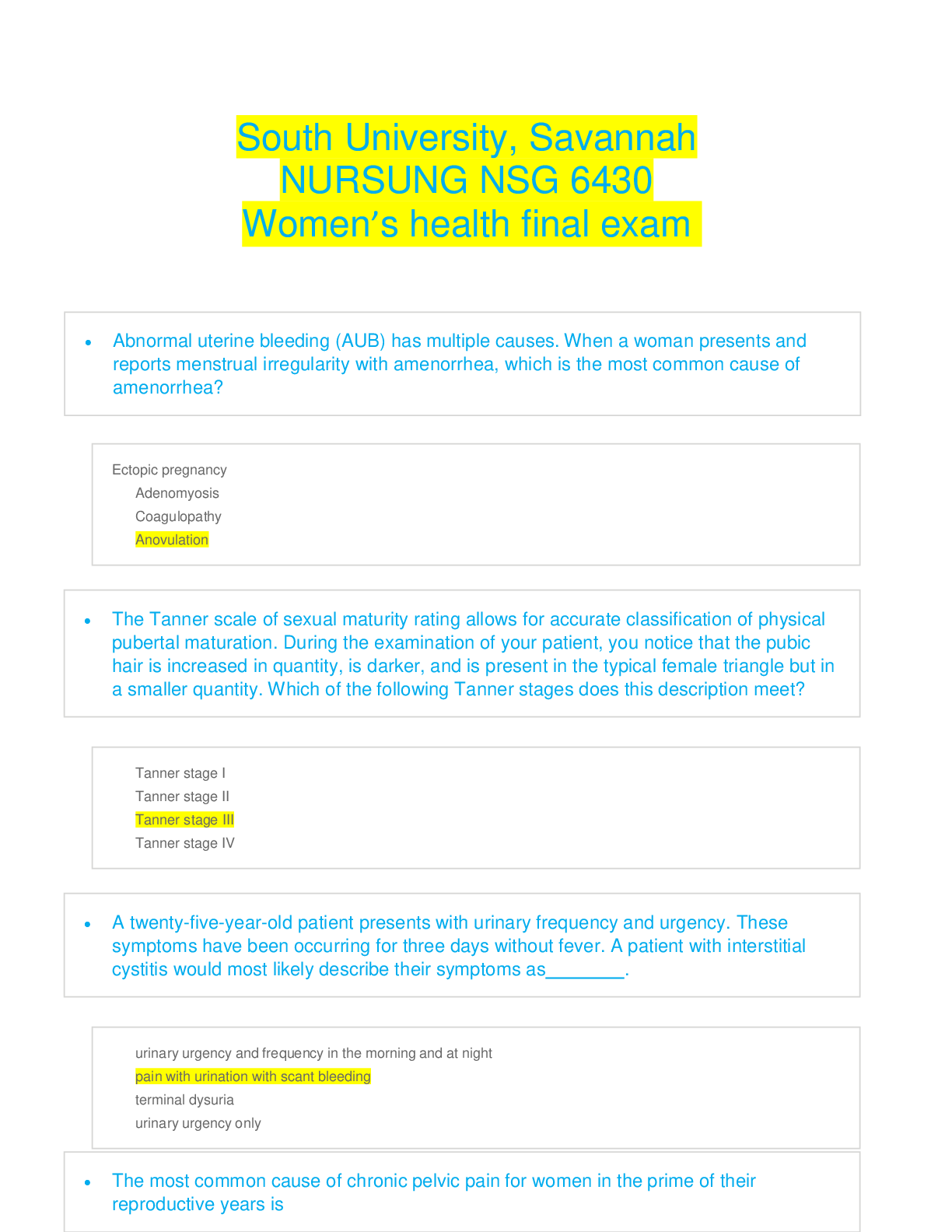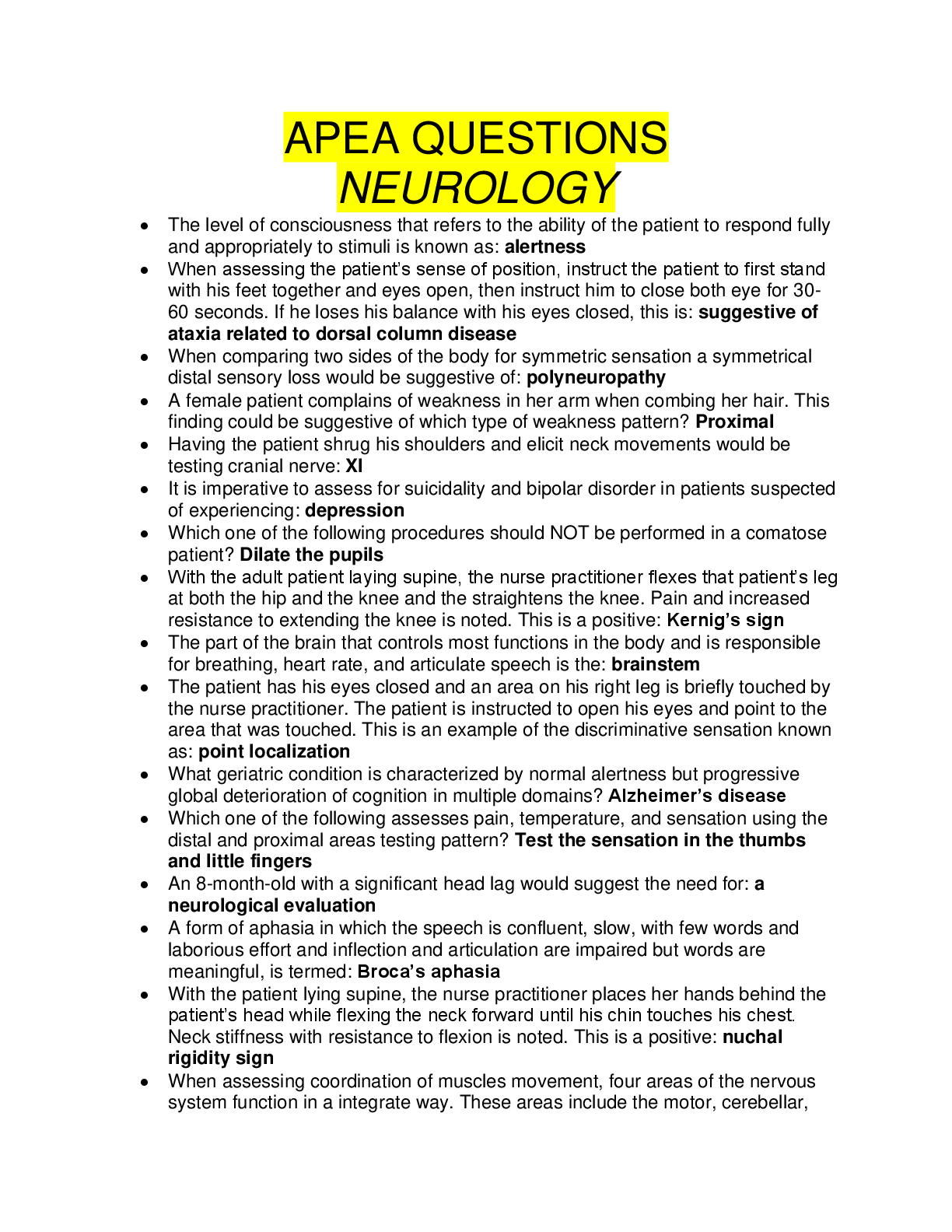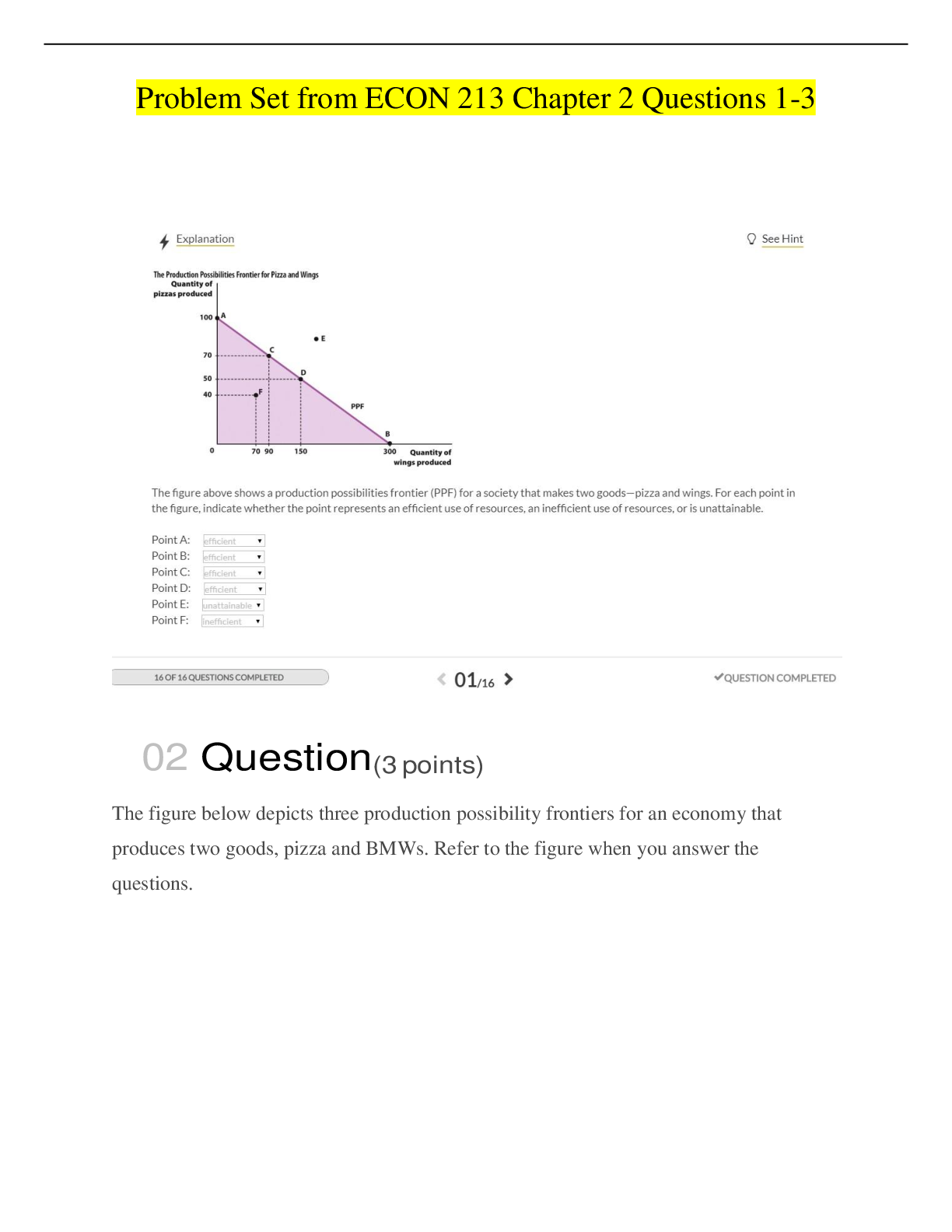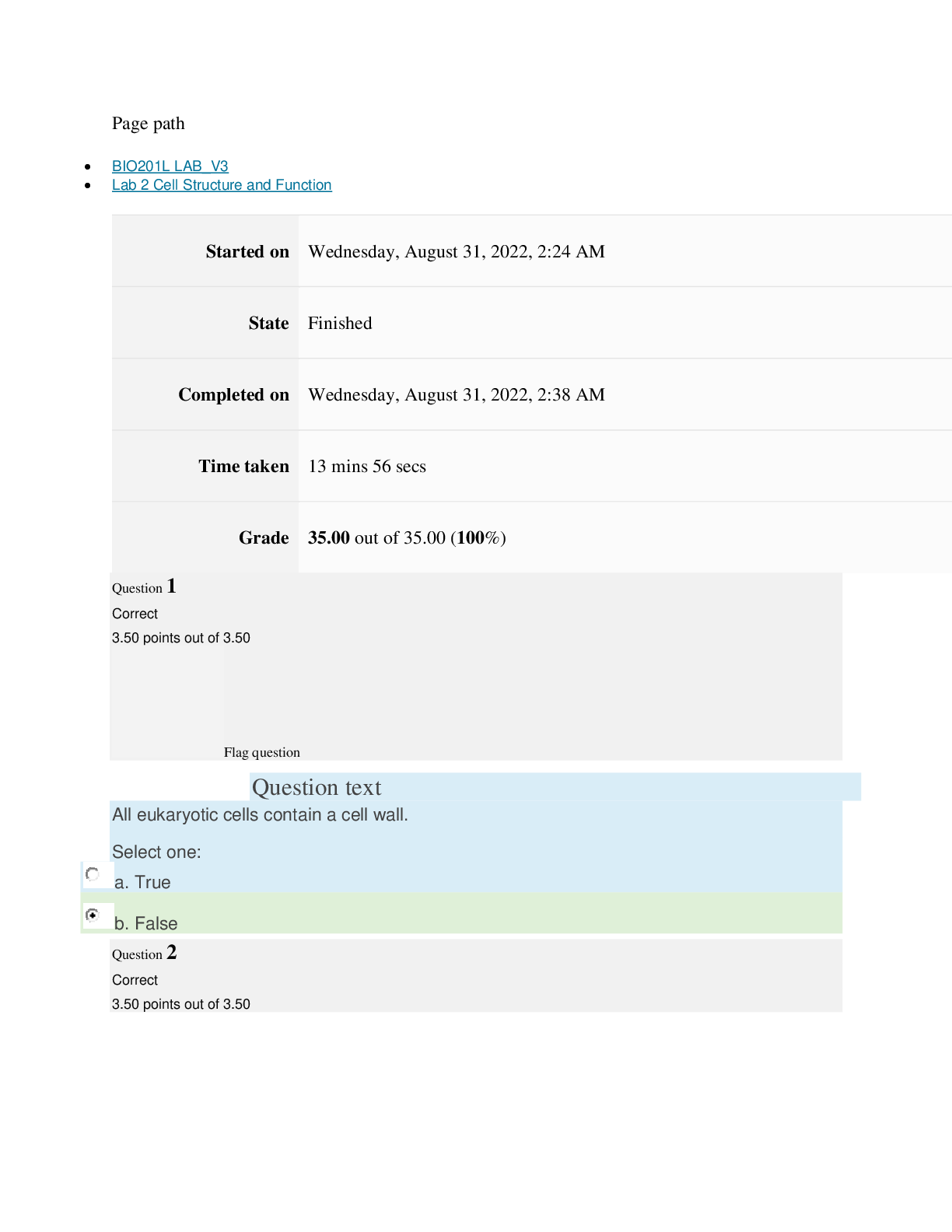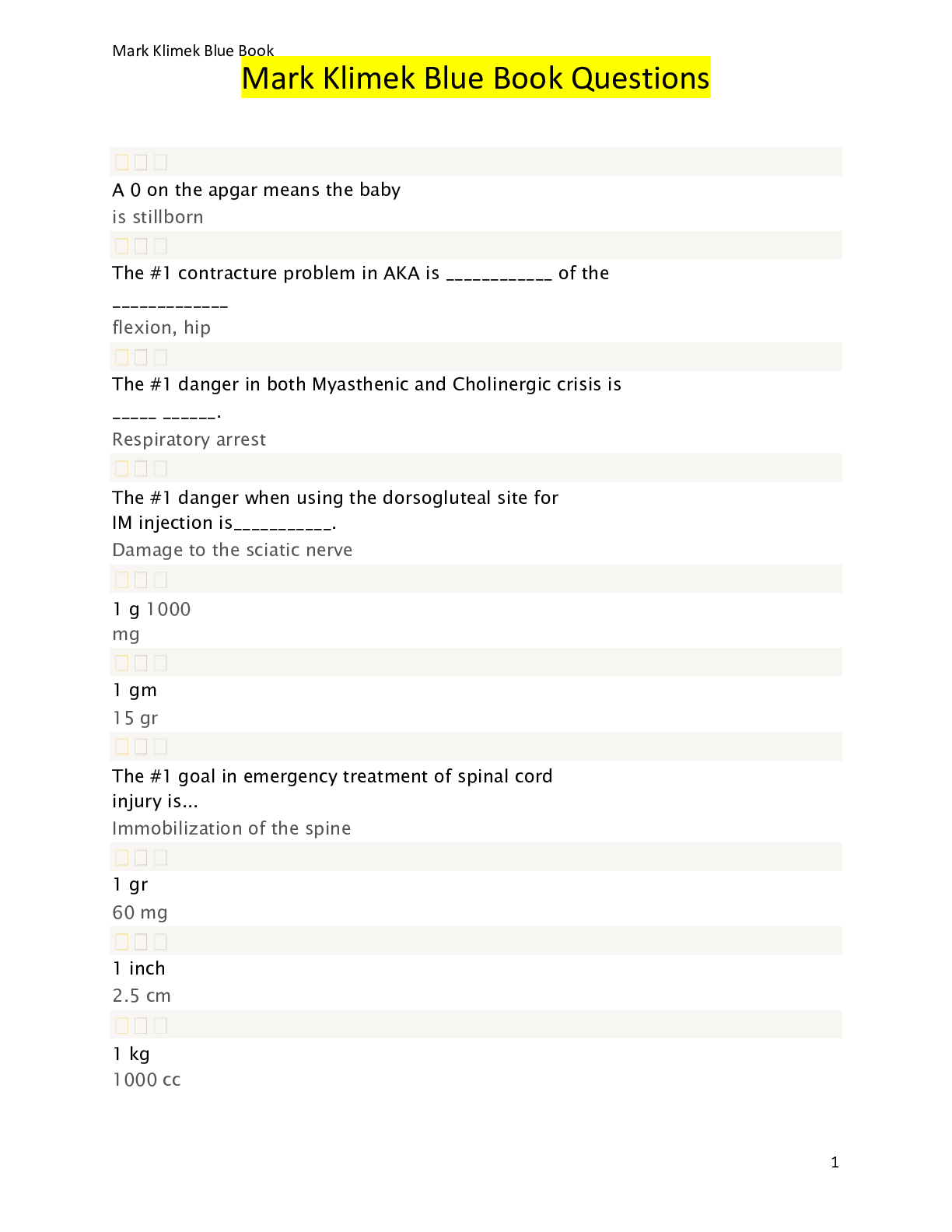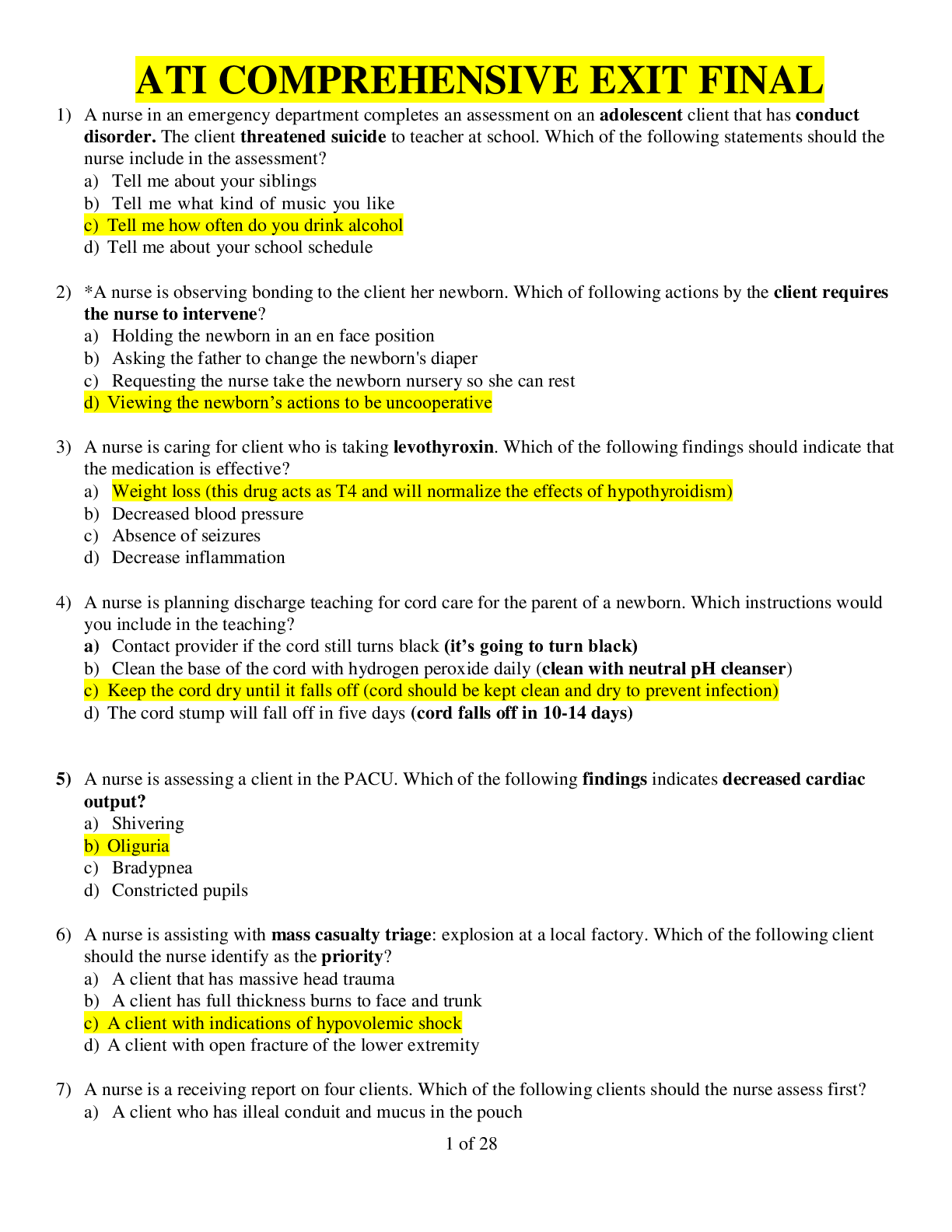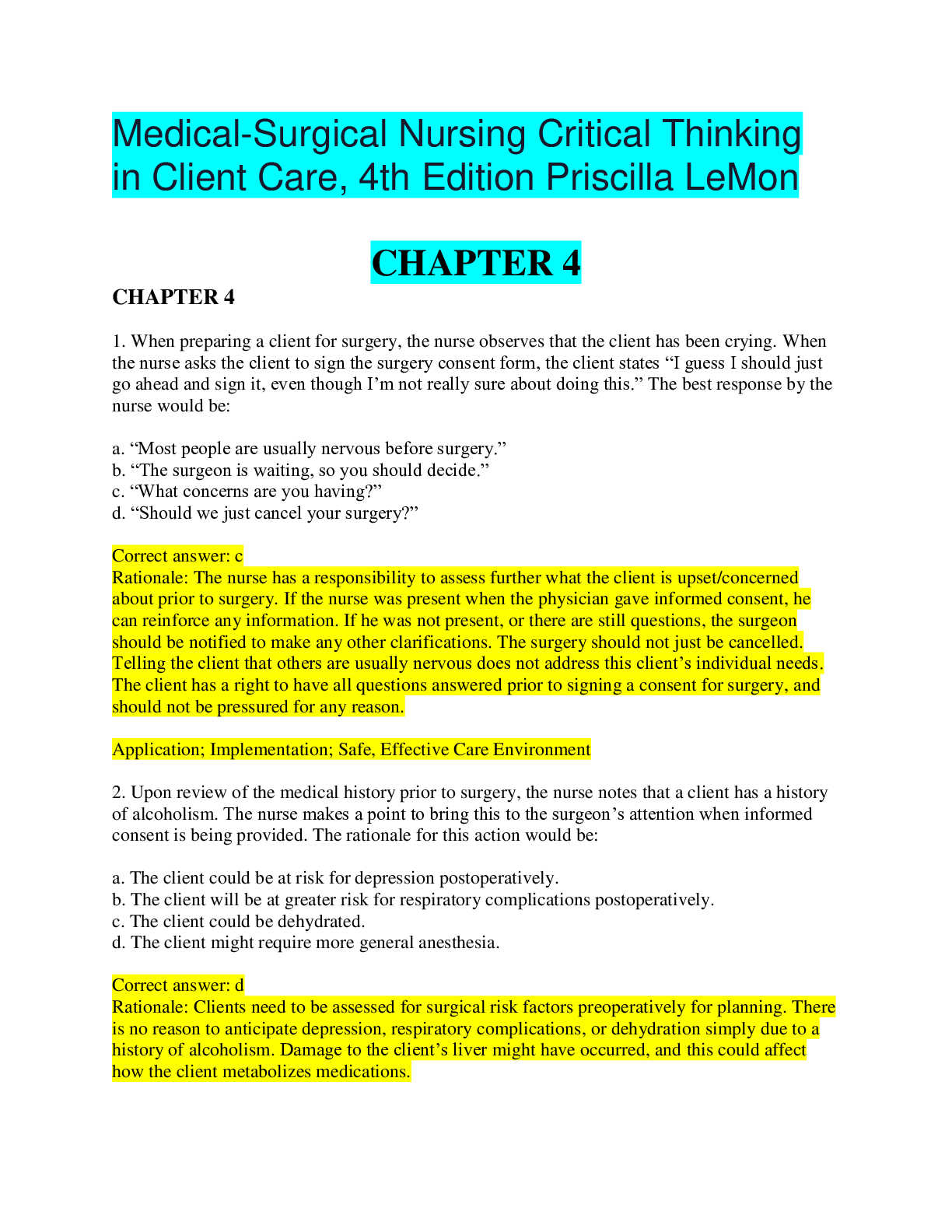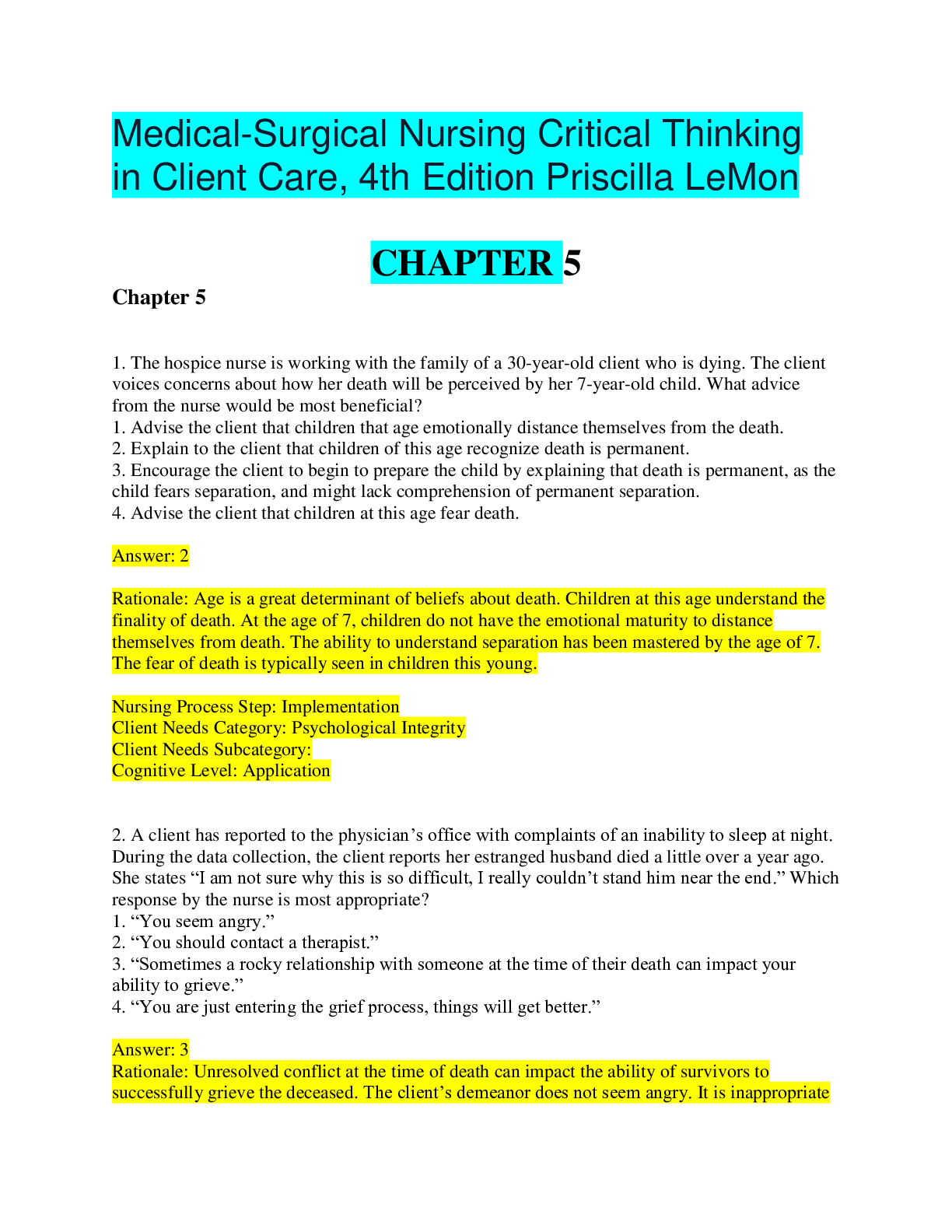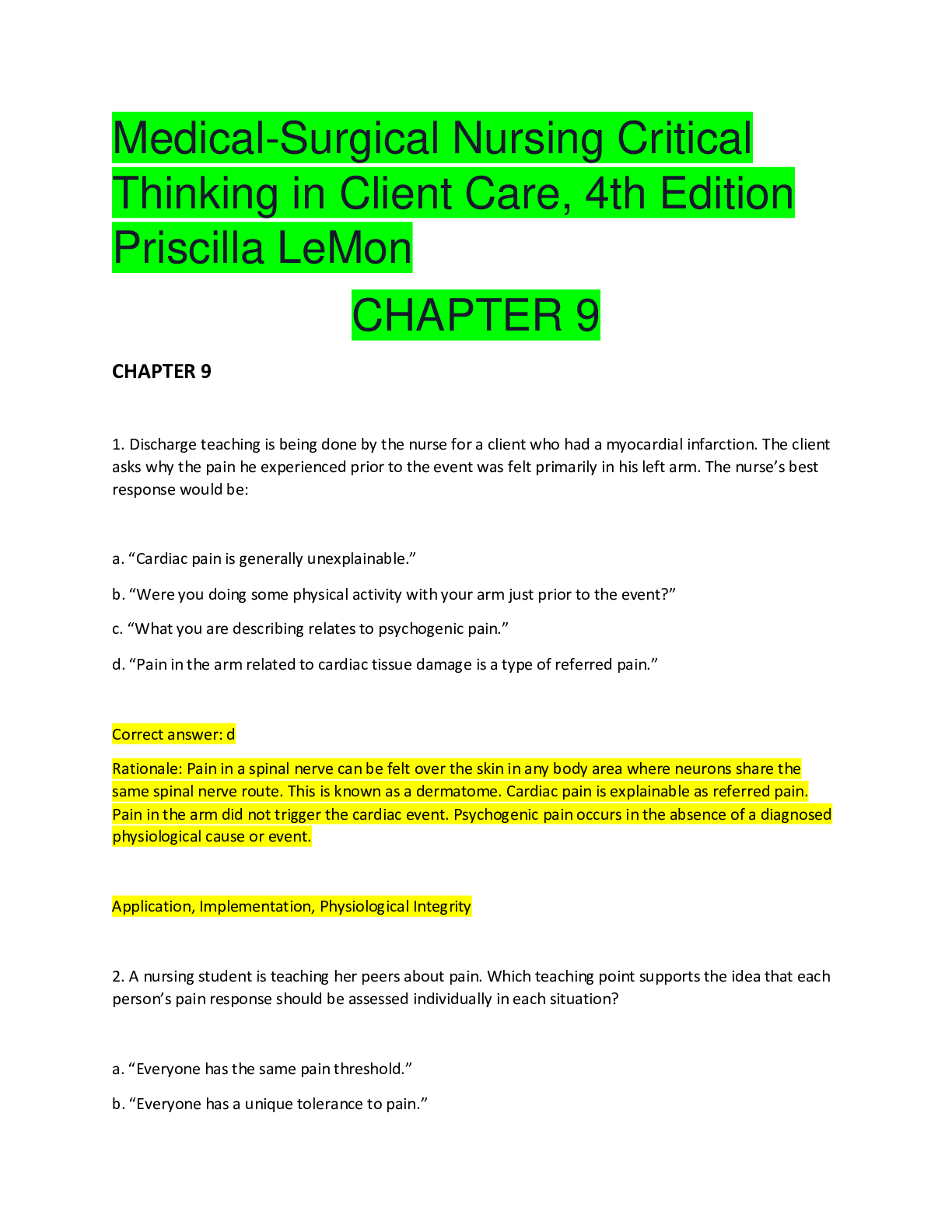Biology > QUESTIONS & ANSWERS > Fresno City College > BIOLOGY 102 > BIOLOGY 102Medical-Surgical Nursing Critical Thinking in Client (All)
Fresno City College > BIOLOGY 102 > BIOLOGY 102Medical-Surgical Nursing Critical Thinking in Client Care, 4th Edition Priscilla LeMon CHAPTER 24
Document Content and Description Below
Medical-Surgical Nursing Critical Thinking in Client Care, 4th Edition Priscilla LeMon CHAPTER 24 Chapter 24 1. The nurse should instruct the client who is at risk for cholelithiasis to make w... hich lifestyle modification? 1. Reduce sodium intake. 2. Increase fluids. 3. Decrease smoking. 4. Decrease fat consumption. 2. When assessing a client who is experiencing hepatocellular failure, which of these findings would indicate to the nurse the client is developing ascites? 1. Accumulation of fluid in the abdomen 2. Yellow-tinged skin 3. Bleeding and bruising easily 4. Gallbladder pain 3. A client with hepatitis is taking alpha interferon. Which of these manifestations would indicate to the nurse that the client is experiencing an untoward effect? 1. Jaundice 2. Flu-like syndrome 3. Gallbladder pain 4. Clay-colored stools Integrated Process: Nursing Process: Evaluation 4. In order to prevent hepatitis B; the nurse should instruct the client to: 1. Wash hands frequently, as the disease is transmitted fecal–orally. 2. Avoid alcohol. 3. Avoid contact with blood and body fluids. 4. Avoid contaminated food and water. 5. When a client who has portal system encephalopathy is being treated with Neomycin (neomycin sulfate), which of these manifestations would indicate to the nurse that the client’s condition is improving? 1. An increase in the potassium level 2. Asterixis 3. Jaundice 4. Increased level of consciousness 6. The client with ascites has had a paracentesis. The nurse should assess the client for which complication? 1. Pneumothorax 2. Ruptured spleen 3. Punctured bladder 4. Hepatitis 7. In the client who has undergone a liver transplant, the nurse should instruct the client to: 1. Eat a high-protein diet. 2. Take anti-rejection every other day. 3. Take acetaminophen (Tylenol) if fever develops. 4. Report any signs of infection to the healthcare provider. 8. The client with pancreatitis asks the nurse “Why are my stools so frothy and smelly?” The nurse’s best response is: 1. “You are developing pancreatic cancer.” 2. “The stools are frothy and smelly due to decreased pancreatic enzymes.” 3. “You have hepatitis.” 4. “You may be developing diabetes mellitus.” 9. The client experiencing pancreatitis whose amylase level has returned to normal should be instructed by the nurse to adhere to what type of diet? 1. Low-residue diet with no alcohol 2. Low-fat diet with no alcohol 3. Low-fat and -fiber diet 4. Mechanical soft diet 10. The nurse is assessing the client with pancreatitis day one and interprets a serum amylase level of 369 units/L to be: 1. Within normal level. 2. Below expected levels. 3. Above normal levels. 4. A resolving problem. 11. A client experiencing esophageal varices has had a Sengstaken-Blakemore tube inserted to control bleeding. The most important complication that the nurse should assess the client for is: 1. Blood clots. 2. Inflammation. 3. Hypoxia. 4. Diarrhea. 12. With the client with cirrhosis, the nurse should evaluate which diagnostic studies to prevent complications associated with bleeding? Select all that apply. 1. Complete blood count 2. Coagulation studies 3. Albumin 4. Ammonia levels 5. Liver functions studies 13. A client has been admitted to the Emergency Department with a diagnosis of Cholelithiasis, and has a history of liver failure. The nurse assesses jaundice, increased abdominal girth, and dyspnea. The nurse should address which of these findings immediately? 1. Cholelithiasis 2. Jaundice 3. Increased abdominal girth 4. Dyspnea 14. A nurse assesses a client with cirrhosis who is experiencing hypertension, edema, and shortness of breath. For which diagnosis should the nurse develop a plan of care? 1. Fluid Volume, Deficient 2. Tissue Perfusion, Ineffective 3. Fluid Volume, Excess 4. Skin Integrity, Impaired 15. The nurse should conclude that the client who has a liver abscess is at risk for developing: 1. Fluid volume excess. 2. Fluid volume deficit. 3. Alteration in breathing patterns. 4. Disturbed body image. [Show More]
Last updated: 2 years ago
Preview 1 out of 9 pages

Buy this document to get the full access instantly
Instant Download Access after purchase
Buy NowInstant download
We Accept:

Reviews( 0 )
$4.00
Can't find what you want? Try our AI powered Search
Document information
Connected school, study & course
About the document
Uploaded On
Apr 13, 2020
Number of pages
9
Written in
Additional information
This document has been written for:
Uploaded
Apr 13, 2020
Downloads
0
Views
72

